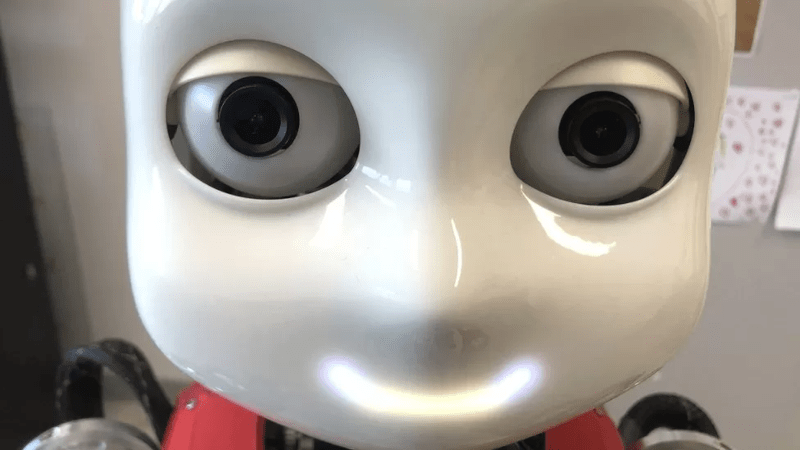There are a few things historically difficult to make a robot do. Stairs, of course, are the obvious problem. But realistic blinking behavior is harder than you might think. At first, it might seem frivolous and simple to have a robot blink, but according to Italian scientists, it is both more important and more difficult than you probably think.
Blinking is a nonverbal cue when humans communicate. The post quotes a Finnish researcher:
While it is often assumed that blinking is just a reflexive physiological function associated with protective functions and ocular lubrication, it also serves an important role in reciprocal interaction.
The researchers found that both 13-year-old and adult subjects like blinking robots more. Apparently, a robot that doesn’t blink makes people feel stared at — sorry HAL.
The researchers also note that blinking is subtle, so getting it right isn’t easy and requires high-precision motors. They mention that making it move fast and look realistic takes a lot of work. We wonder, however, if an LCD-rendered eye could blink very effectively and at a lower cost. After all, the eye doesn’t have to be the robot’s actual camera. Regardless, the researchers point out that if the blinking isn’t natural, it appears “odd and disturbing.”
We’ve seen plenty of blinking eye mechanisms. They don’t have to be overly complicated.

















Agility Robotics’ Digit winks! – (watch at 0:14) https://twitter.com/GiryaGirl/status/1637934068783349763
It is easy to get realistic blinking in a robot, just have it copy the person it is interacting with, because they are not aware of their own blinking anyway therefore not likely to notice and object to being aped but the robot.
“Sorry, HAL”? HAL didn’t have eyes, so no need to blink.
Speak to an animator. They’ve nailed this down for over a hundred years.
If I remember correctly Data in Star Trek explained that his blinking was based on the Fourier series that helped mimic randomness of eye movement. He even taught that to his daughter Lal in the episode Offspring.
Apparently one can use a Fourier series.
https://memory-alpha.fandom.com/wiki/Datahttps://memory-alpha.fandom.com/wiki/Data
Never attempt a staring contest with a newborn baby either. It really freaked me out when my first child was born. They don’t blink. It’s really unnerving when you notice.
Blinking also reflects internal mental states and visual processing context switches, so the absence of appropriate blinking would suggest to someone interacting with the non-blinker that something is amiss. The phrase “swivel-eyed” exists for a reason, suggesting high anxiety or frantic energy.
Agreed. And the blinking won’t look really real until the bots get trained to replicate emotions in ways that trigger our mirror neurons through eye contact and subtle visual cues.
Also, they need bottom eyelids that move.
Psychopaths don’t blink. Like cats. Ask Hanibal Lecter :-D
Simpler solution is to not put faces and eyes on robots. Nobody complains about their Roomba not blinking.
Nor humans.
https://static.wikia.nocookie.net/no-face/images/a/a3/Faceless_crew_woman_Star_Trek.jpeg
Didn’t Kismet blink?
http://www.ai.mit.edu/projects/sociable/baby-bits.html
It is unethical to try to make people “like” your robot, or anthropomorphize it in any way. It contributes to, and normalizes, the technology of manipulation.
says someone named Sok Puppette? by your standard, having a human face is ‘unethical’ because our faces are shaped by evolution to maximize their ability to manipulate the emotions of others.
You want a blink? Put a mechanical shutter back into the lens. Heck, even the drop down mirror of an SLR should change lens attributes enough to be considered a “blink”.
Well he had a cyclops-like camera lens, no?
They could end up becoming a future.. Weeping Angel… The kind Dr. Who warns us about…. Learning how not to blink is important! 😁
How to survive a Weeping Angels attack!
“Don’t even blink.
Blink and you’re dead.
Don’t turn your back, don’t look away, and don’t blink.”